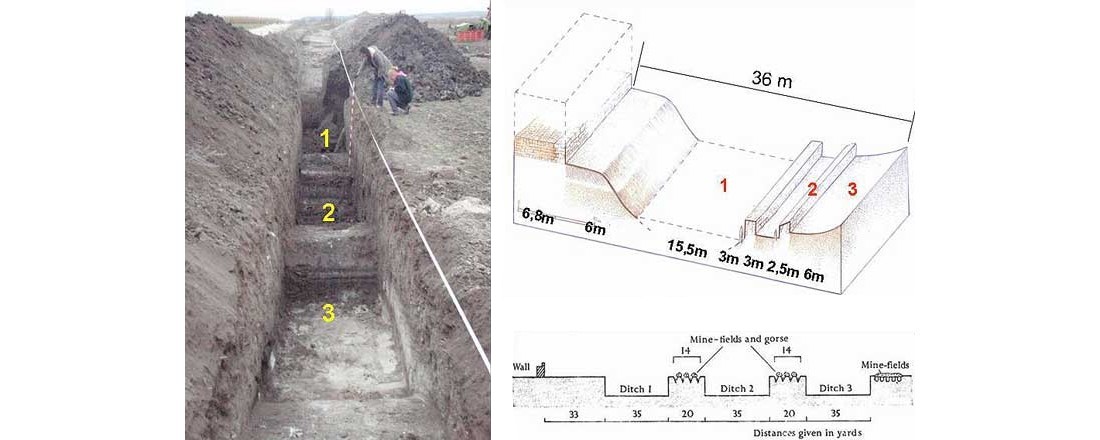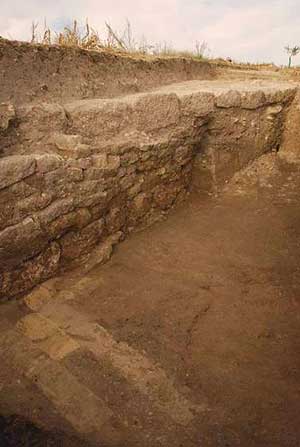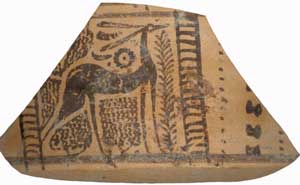
The wall and the moats of Pintia

The three moats of the Pintia's wall and the Filon of Siracuse scheme to which they probably are related to
A unique defensive system
The written sources regarding the defensive works of Vaccean cities are scarce, limited to a few lines from antiquity and, above all, repeated surveys from the air conducted since the 1990s.
In the Classical sources, the reference by Appian (BC, I, 112) about a fire at the walls of Pallantia during Pompey's war against Sertorius in the 74 BC suggests that it was a wall built of mudbrick and tree trunks.
Aerial surveys of several Vaccean settlements were more detailed, outlining complex defense systems that included large walls and moats at sites such as Valoria la Buena, Palenzuela, El Teso de Cuestracastro in Mota del Marqués and Padilla de Duero.

View of the section of excavated wall
An emergency excavation that took place in the fall of 2009 uncovered for the first time the defensive structures of a Vaccean city. In Pintia's case, they consisted of a very impressive system; a wall about one kilometer long, 7 meters wide, and with a remaining height of around 1.5 meters. Important points of the wall were reinforced with solid fittings.
Three consecutive moats were dug about 6 meters away from the wall, separated by ledges and dividers, in all around 30 meters wide. The gradient that a potential attacker would need to ascend from the lowest point of the moat would not be less than 10 meters. Excavation has shown that during Roman occupation, at the beginning of the 2nd century AD, the moat was filled in with mostly pieces of the wall and other debris and earth. The suspected objective was to avoid a health risk from the stagnant moat water.
Among the artifacts recovered from the moats was a shard of Clunia-type pottery with an exquisitely painted fawn on it.

Fawn ceramic
The settlement of Los Hoyos
The story of Pintia's city walls cannot be told without explaining another discovery, in 2000, about 150 meters from the wall.
In a spot known as Los Hoyos, where two roads intersect, archaeologists found a stone and mud wall around 4-5 meters wide. The structure, with a deep ditch running alongside it, facing the city, is thought to have been built during a siege of Las Quintanas, possibly during the Sertorian conflicts during the first quarter of the 1st century BC. This shows that we cannot overlook the areas around Las Quintanas, and the land between the Duero River and the Vega stream, which is a swampy area that is known locally as Las Navas, a name that reflects a flat area, possibly marshland.
A detailed study of the terrain showed that the Roman siege wall was located on the only viable road toward the city and, further on, toward the natural access that linked both sides of the Duero River and also the artisan neighborhood of Carralceña.






